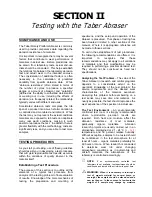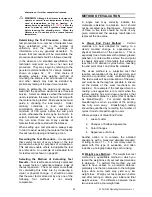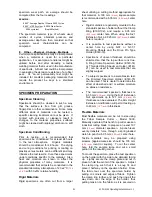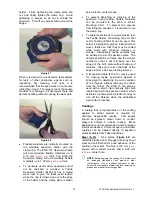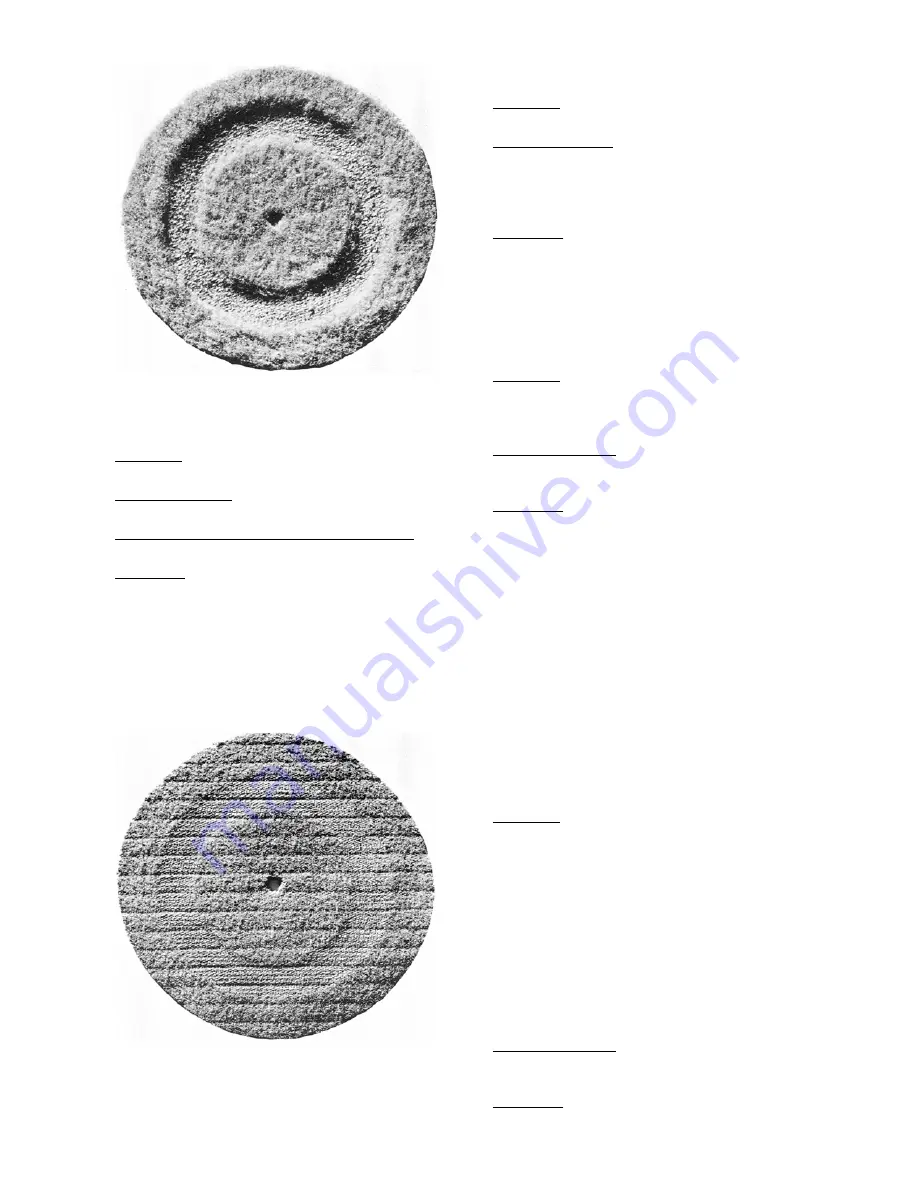
Figure 79
Textiles – Upholstery (Figure 80)
Specimen: 108 mm
(4.5 inch)
round or square
mounted on S-36 mounting card.
Wheels and Load: H-38, H-18 or H-22 Calibrade
with 500 or 1000 gram load.
Wheels and Load – Medium / Heavy Fabrics: H-
18 or H-22 Calibrade with 1000 gram load.
Evaluation: Visual method, changes in luster;
surface; color; appearance of first broken
threads; appearance of a hole. Alternatively,
physical changes such as thickness; air
permeability; weight; strength.
Remark: Upholstery materials ordinarily require the H-38
Calibrade wheel with 500 gram load; floor coverings, such as
broadloom carpets or automobile floor mats should be tested
with 1000 gram load using H-18 or sometimes H-22 wheels.
Figure 80
Tile (Rubber and Asphalt)
Specimen: 100 mm
(4 inch)
diameter or square
with 6.35 mm
(0.25 inch)
center hole.
Wheels and Load: H-18 or H-22 Calibrade with
500 or 1000 gram load. For solid linoleum
subjected to extreme wear or cutting action, S-
35 Tungsten Carbide wheels with 1000 gram
load.
Evaluation: Weight loss or depth of penetration
[maximum depth of penetration recommended is
0.8 mm
(0.0312 inch)
].
Remark: For specimens 6.35 mm
(0.25 inch)
to 12.7 mm
(0.5 inch)
thick, use S-21 Extension Nut.
Wax Coating
Specimen: Coating applied to substrate
approximately 100 mm
(4 inch)
square with 6.35
mm
(0.25 inch)
center hole (i.e. S-16 specimen
plate).
Wheels and Load: CS-17 Calibrase with 1000
gram load. Alternatively, the H-22 or H-18
Calibrade with 1000 gram load may be used.
Evaluation: Visual method, by comparison of the
number of wear cycles necessary to produce an
equal degree of abrasion with that of an
unwaxed standard of like material tested under
otherwise identical conditions.
Remark 1: In making the test, it is necessary to allow for the
fact that the wheels will become coated with wax transferred
from the specimen. Depending on the number of test cycles,
wheels may require refacing during testing.
Remark 2: A coating of wax applied to a surface has
practically no abrasion resistance of itself but does act as a
lubricant which reduces the tendency of two surfaces
rubbing together to abrade. This lubricating effect prolongs
the life of the finish to varying degrees, and the action of the
wax is similar to that of grease in lubricating mechanical
devices.
Wire – Insulated (Figure 81)
Specimen: To prepare the specimen, an S-36-1
mounting card is placed on the specimen holder.
An abrading wheel cap nut is placed temporarily
over the holder center screw to act as a guide.
The specimen wire is wound in a clockwise
direction, in a flat spiral, outward from the
circumference of the guide to the edge of the
holder. The cap nut guide is then removed and
the coiled wire specimen, mounted on its holder,
is placed against a flat surface and weighted
with 5 pounds for 1 hour. The specimen holder
clamp plate and clamp ring are attached to the
holder before the test begins.
Wheels and Load: CS-17 Calibrase with 1000
gram load. Alternatively use H-22 Calibrade
with 1000 gram load.
Evaluation: Visual end point, at the first sign that
39
5135 / 5155 Operating Instructions ver 1.1




